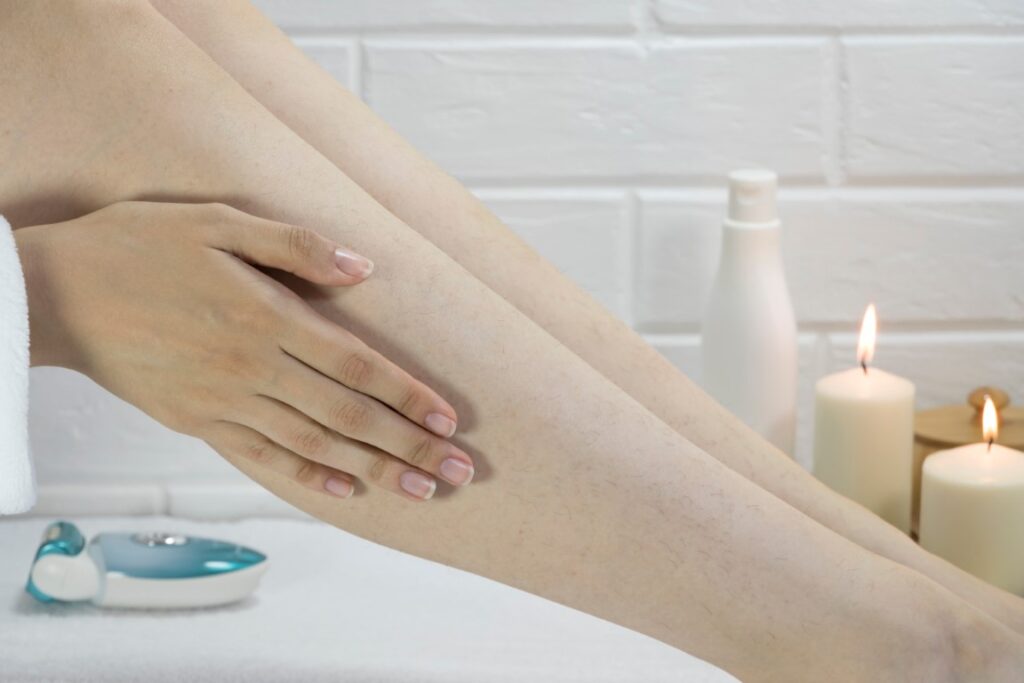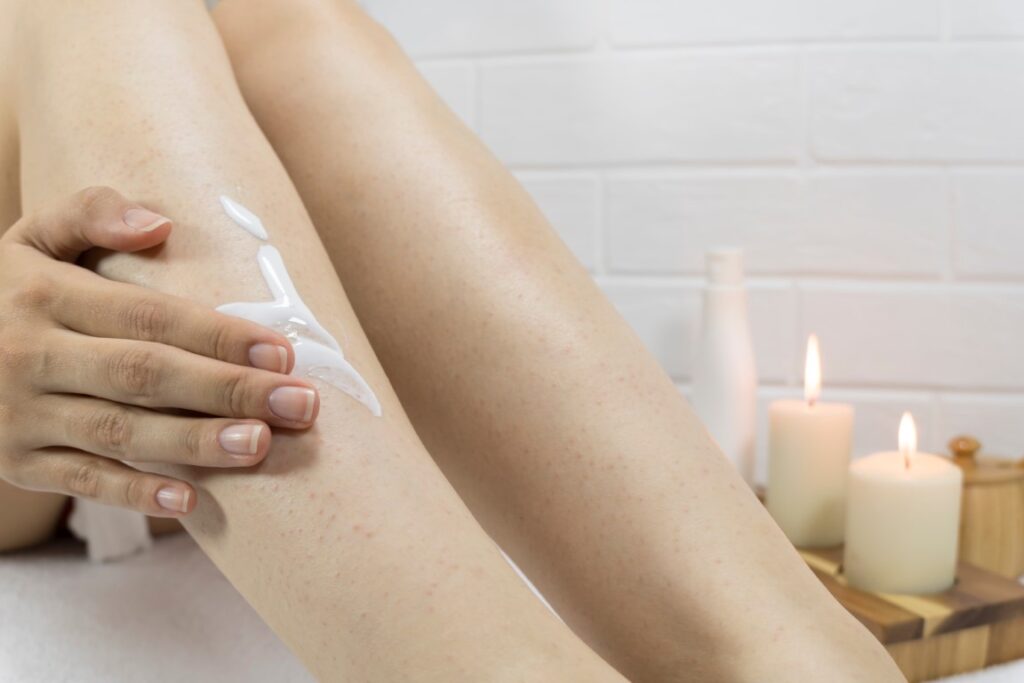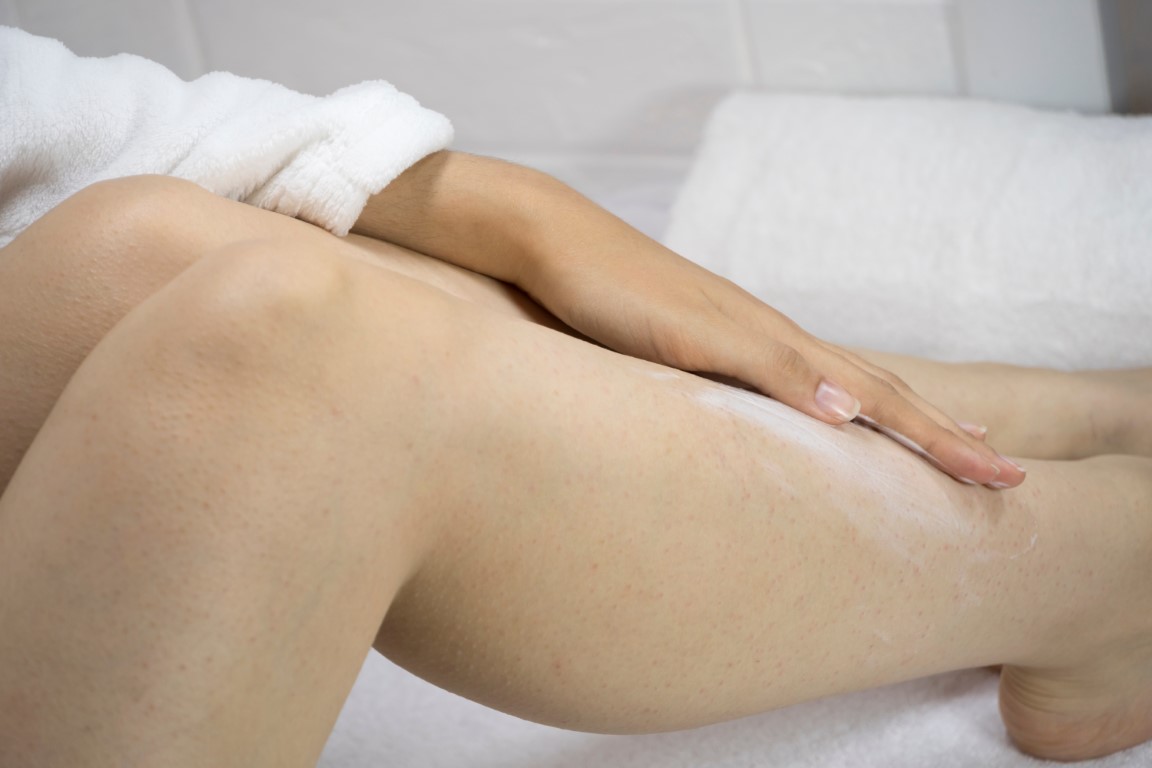You might have strawberry legs if you’ve observed dark spots on your legs that resemble tiny black dots. The term alludes to the look, which is speckled or pitted and mimics the seeds and skin of a strawberry. Although they might make a person feel embarrassed, strawberry legs are typically not unpleasant or irritating. If someone does feel pain or itching, they should contact a doctor because it might be a sign that an underlying problem is present.

Typical strawberry legs signs and symptoms include:
- Open pores with a darkened appearance.
- Patches that develop when a person shaves their legs, either black or brown.
- A pattern on the legs that are speckled or pitted.
What causes strawberry skin?
Despite referring to a specific appearance, “strawberry legs” is essentially a general word. The distinctive appearance of strawberry legs can be brought on by several different disorders, some of which may overlap.
1. Shaving
Regularly using a razor with blunt or dull blades or shaving without cream results in razor burns on your skin, which can eventually develop strawberry legs. Ingrown hairs can also result from failing to exfoliate before shaving, which is another factor that can contribute to this uncomfortable condition.
2. Folliculitis
Folliculitis is a condition marked by the appearance of tiny, red pimples all over your legs. The friction that your clothing creates on your skin, or the harsh and dehydrating chemicals present in bath and body products might aggravate this disease.
3. Keratosis pilaris
This occurs when keratin, a protein that your skin frequently sheds, becomes stuck in the openings of the hair follicles, resulting in skin that resembles a strawberry. At the back of your arms, thighs, cheeks, and buttocks, keratosis pilaris is prevalent and manifests as small bumps over dry, patchy skin.

4. Dry skin
Although strawberry legs or dark skin aren’t directly caused by dry skin, it certainly contributes to their development. Extremely dry skin is more prone to folliculitis, razor burns, and skin irritation after shaving. Those pimples that are black and red are now more noticeable.
Treatments for strawberry legs
1. Exfoliation
Exfoliation assists in removing dead skin cells, dirt, debris, and bacteria and guards against clogged pores and follicles. Additionally, it stops ingrown hairs. The key thing to keep in mind when exfoliating, whether using physical scrubs, chemical scrubs, or just plain dry brushing, is to be extremely gentle. While treating strawberry legs with excessive force and harshness, you will undoubtedly harm your skin in other ways.
2. Use a shaving cream
If you haven’t purchased a shaving cream yet and frequently use hair conditioner and soap shaving tips on the internet, you need to stop right away. To accomplish a flawless shave and treat strawberry legs, it is necessary to soften the hair and lubricate your skin by using moisturizing shaving cream.
3. Moisturize
To reduce inflammation and keep your skin soft and supple, it is crucial to moisturize the region after any hair removal procedure, especially after exfoliating and shaving. Additionally, by consistently moisturizing your legs, you can avoid dry skin, another significant contributor to strawberry legs, by ensuring that your skin is properly hydrated.
4. Laser hair removal
This is particularly advantageous for those with thick and coarse hair because they may find conventional hair removal techniques, including waxing and epilators, to be too unpleasant and irritating to their skin, in addition to being more likely to develop strawberry legs. Laser hair removal works well on strawberry legs because it targets the hair follicle and stops hair regrowth.
Typically, strawberry legs are nothing to worry about. Usually, modifying one’s self-care regimen allows one to prevent or treat strawberry legs at home. For instance, they might begin shaving their legs with shaving cream and a strong blade. Strawberry legs can also be avoided and treated by regularly exfoliating and hydrating the legs. The development of strawberry legs may be brought on by underlying infections, which should be discussed with a doctor if home therapies are unsuccessful. These infections are typically simple to treat.

